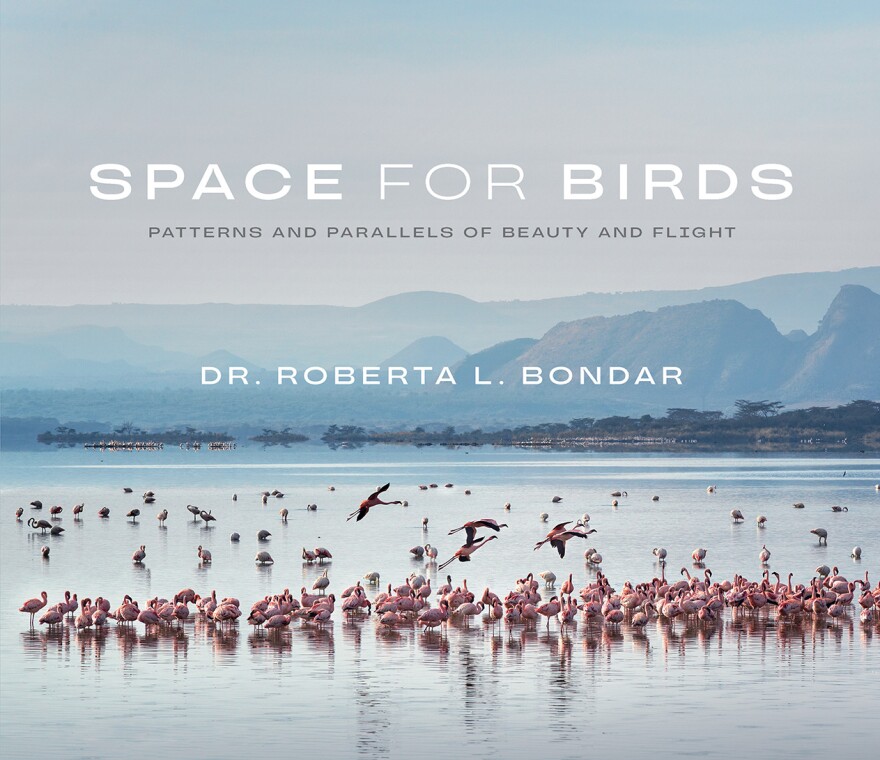Birds and spacecraft have a lot in common
After launching into space, one veteran Canadian astronaut is bringing her knowledge back to Earth to study another form of flight.
Roberta Bondar’s career path led her into orbit on the Space Shuttle Discovery back in 1992, becoming the first female Canadian astronaut and first neuroscientist in space. The journey – and the view from her spacecraft -- deepened her appreciation of nature on our planet. Now, her hope is to use bird’s migratory patterns to help scientists develop better aerial travel and respect for Earth’s bird species.
In her new book, Space for Birds: Patterns and Parallels of Beauty and Flight, Bondar captured images from two different bird species--some shots taken while she was in the air herself. But before her experience as an astronaut, her love for birds began at a very young age.
“When we used to go camping in Wisconsin, Michigan from Sioux, Canada, my parents were very good about looking at the natural world and getting us interested in naming butterflies and birds,” Bondar said. “In biology, I excelled and decided that if there was a time when I could do something to help birds in any way, that I would like to do it.”
Space helped her develop a deeper appreciation and understanding of our fragile planet. Bondar said she went into space with the plan to gaze beyond just the planet and to look out into the vastness of space.
“It was this light-sucking black is all I can call it,” Bondar said. “It set a whole new tone for me to see the edge of our planet against this infinite black universe beyond. I think it was that kind of edge moment that to see the Earth as a planet, to be in that moment.”
After her space mission, Bander never lost her love for flying and used her experience to start observing birds. The two species Bondar followed and photographed for the book were the Whooping Crane and the Lesser Flamingo.
While in space, Bondar could see their massive migration corridors. On Earth, she was able to photograph them in flight.
“I wanted to be able to show that they are very strong,” Bondar said. “That they had a home to go to, that they relied on actual worlds of Earth to be able to maintain this long migration that they make.”
Aside from how humans can benefit and learn from birds, Bondar said she is hopeful that the message readers take away from her book is to appreciate our planet.
“If we ignore the natural world, we do it at our own peril,” Bondar said. “We need the natural world to do so many things. “There’s a view of looking at it as a service industry. I'd like to look at it a bit more emotionally, because there are living organisms that are fragile. Set aside plants and trees, which you just don't want to get rid of either, but when we look at things like birds, they actually can pull us across the planet.”
What’s that in the sky? Could it be a UAP?
UAP’s or unidentified aerial phenomena, have been documented throughout human history.
Now those conversations have gone mainstream, including NASA signaling its interest in collecting data on UAP’s and Congress holding public hearings on the matter.
The most recent hearing happened last month, and now the public is once again talking about what knowledge the government and public have about unidentified aerial objects.
At the hearing last month, Michael Gold, the chief growth officer at Redwire, an aerospace manufacturer, and former NASA associate administrator, said the conversation about UAP’s needs to be discussed without criticism.
“Science requires data,” Gold said. “Which should be collected without bias or prejudice. Yet, whenever the topic of UAP arises, those who wish to explore the phenomena are often confronted with resistance and ridicule.”

Sarah Scoles, a science journalist and author of the book They Are Already Here: UFO Culture and Why We See Saucers, said the topic of extraterrestrial life and UAPs has been taken more seriously after the common UFO term was swapped for UAP to combat that ridicule from members of the public.
“My understanding of why we switched from the very well-known acronym to this lesser-known one is that the term UFOs has a stigma attached to it,” Scoles said. “You think flying saucers. You think weird people looking up at the sky, seeing weird things. I think in this latest round of UFO fervor, there's been kind of a national security focus, like people in the military, and as you mentioned in Congress, are concerned about what's going on in the skies.”
If someone sees a strange flying object, Scoles said there are ways to report it. One organization called MUFON, or the Mutual UFO Network, allows people to submit a report for possible investigation of the phenomenon. Additionally, Scoles pointed to The Black Vault, a website with documents and research about UAPs.
For some, the topic of UAPs can be quite disturbing or fearful. Scoles said before anyone makes assumptions, to take a moment to research and pull information before jumping to any conclusions.
“I would approach it mostly with personal curiosity,” Scoles said. “I wouldn't go straight to fear for sure, but I would focus on doing my own research. I think looking at those congressional hearings, looking at the reports from the Defense Department, looking at what NASA is doing, and kind of drawing your own conclusions from it because no one has all the answers. Everyone's coming into it with their own personal interpretations and experiences.”






